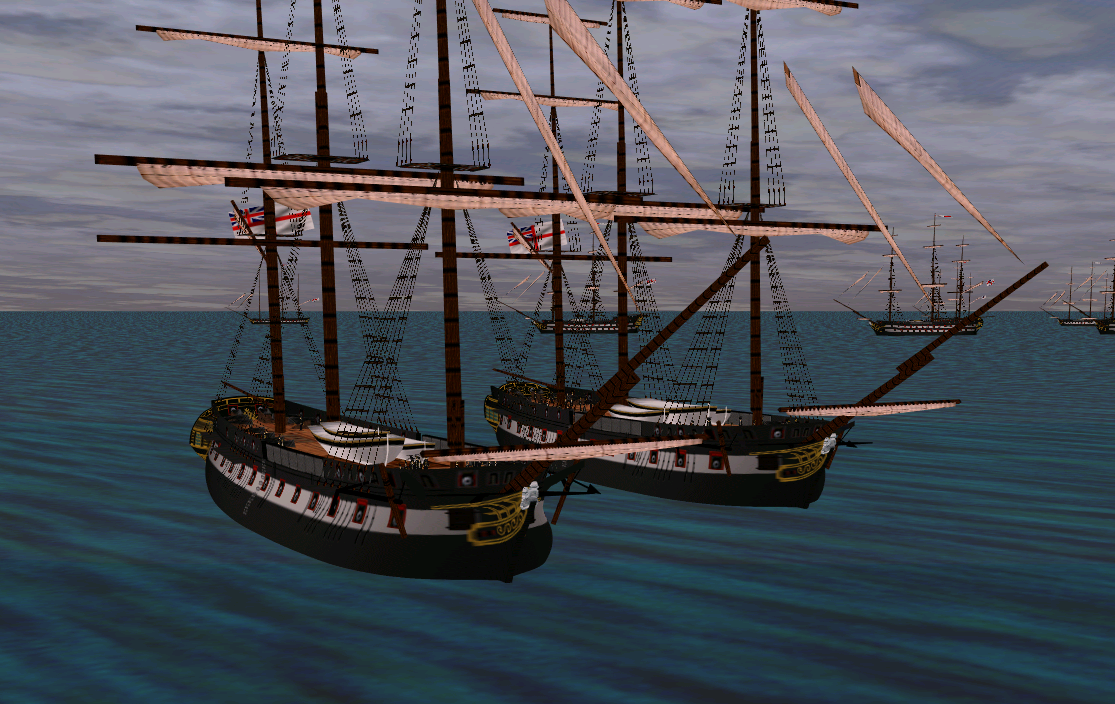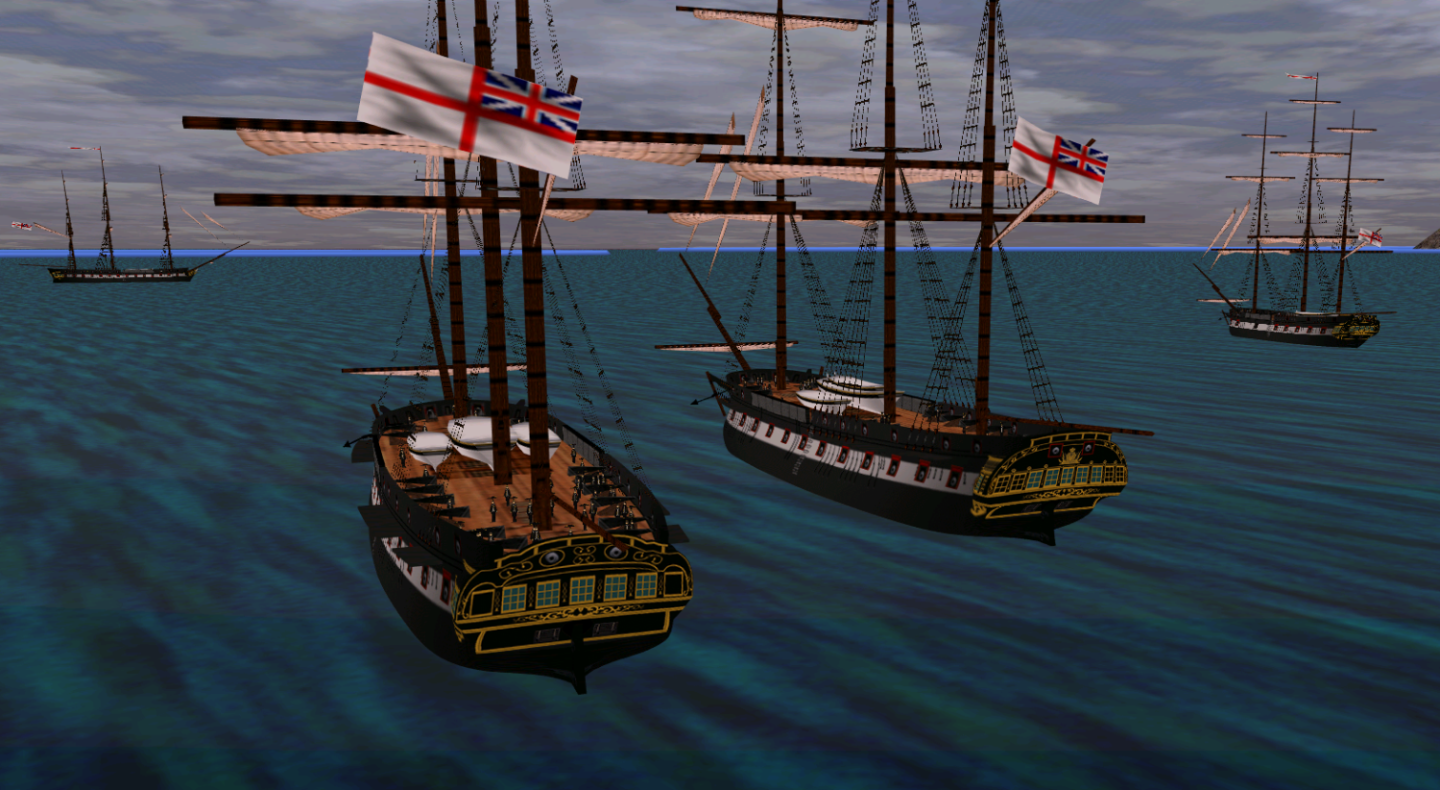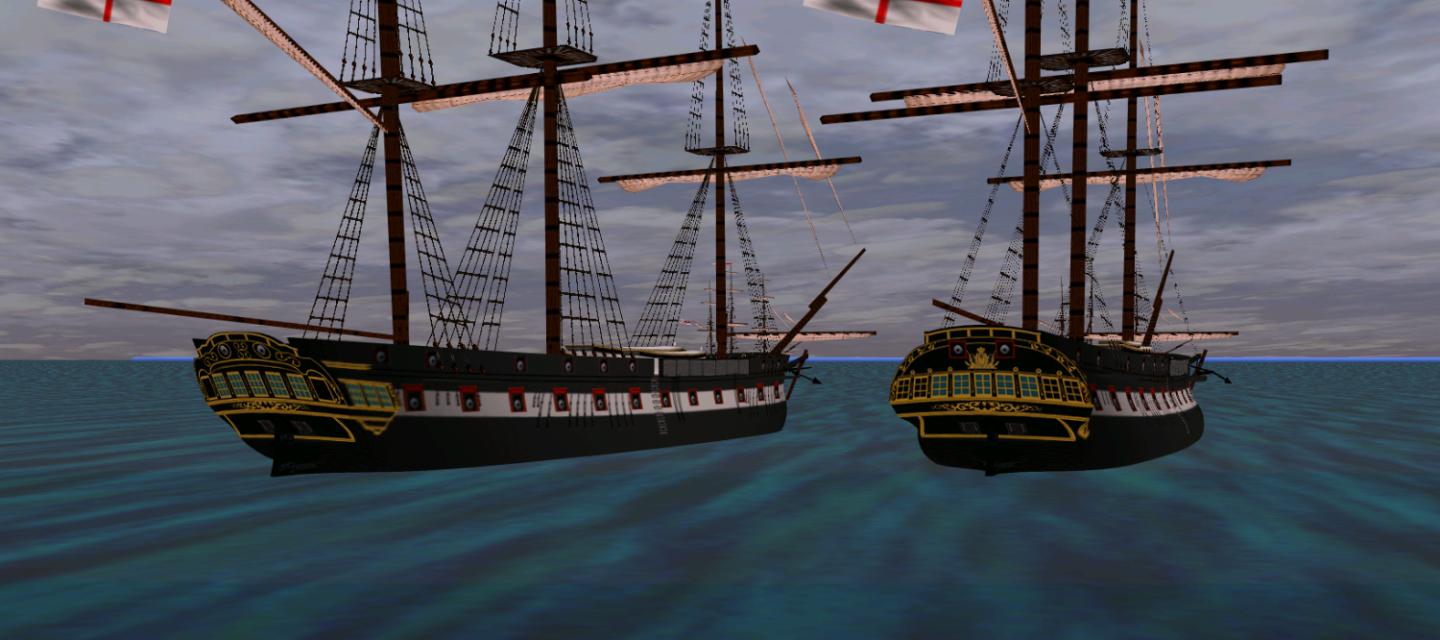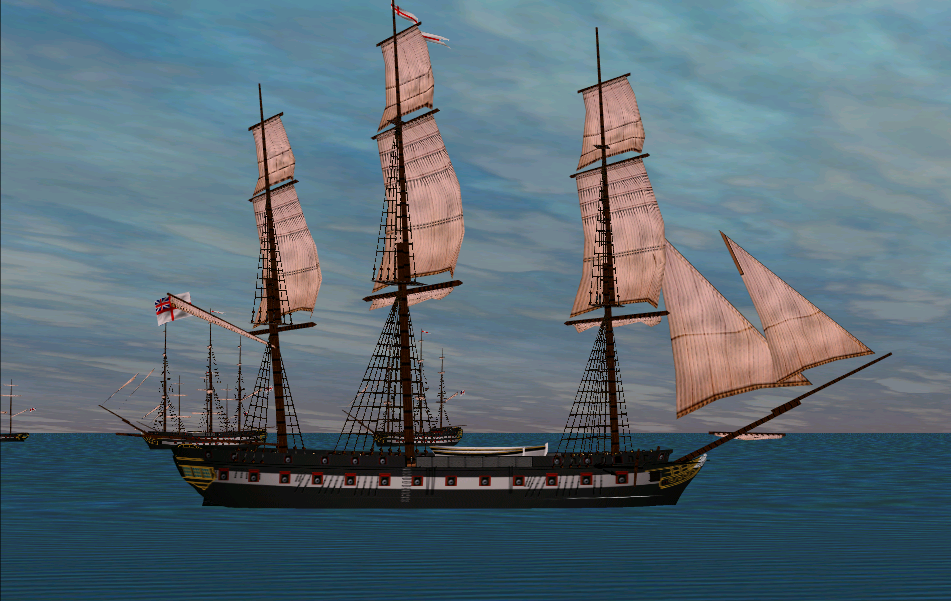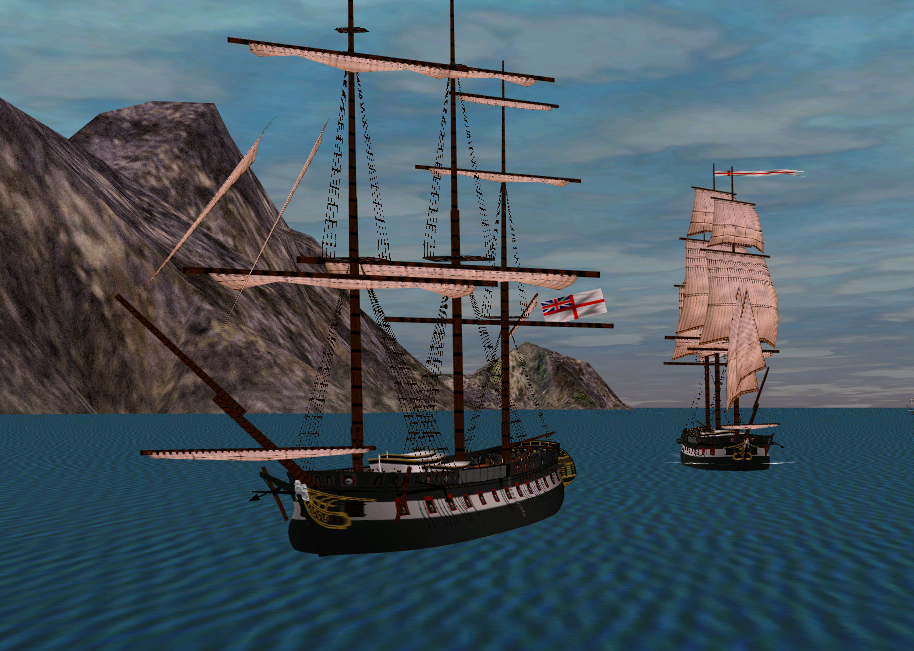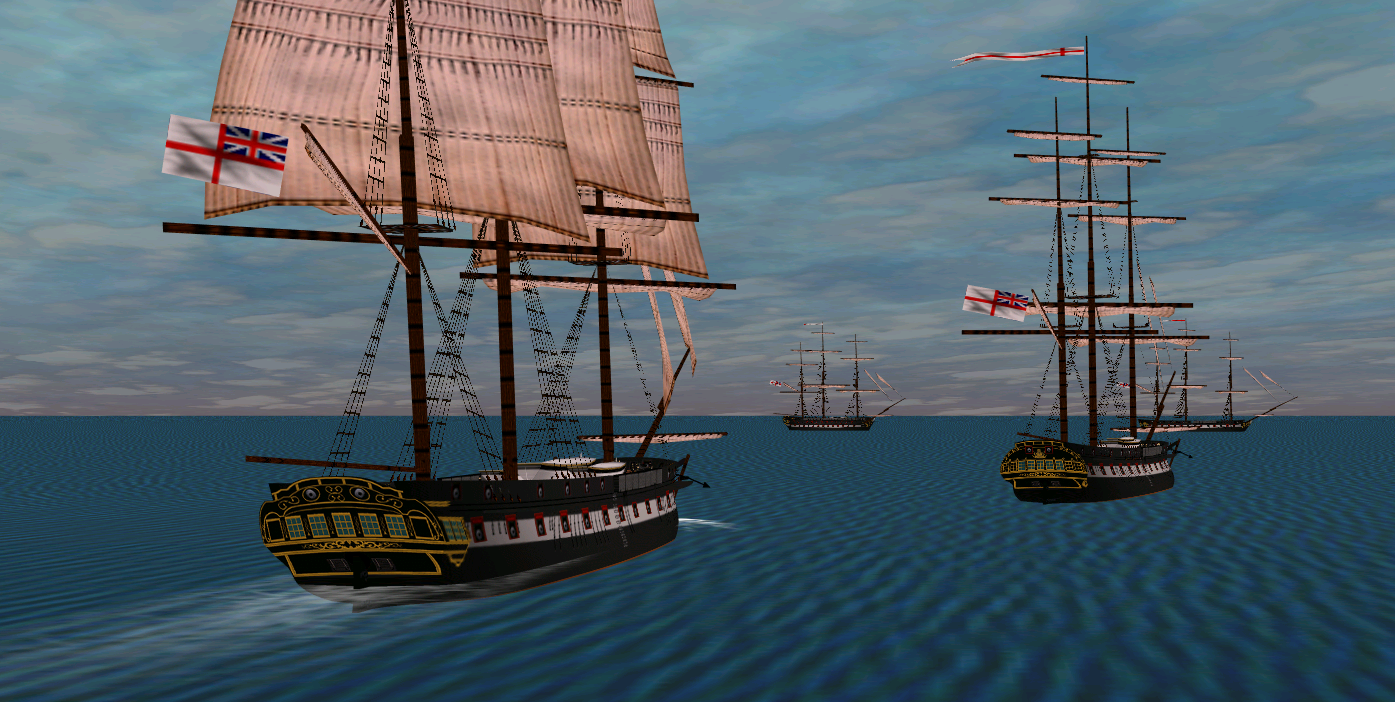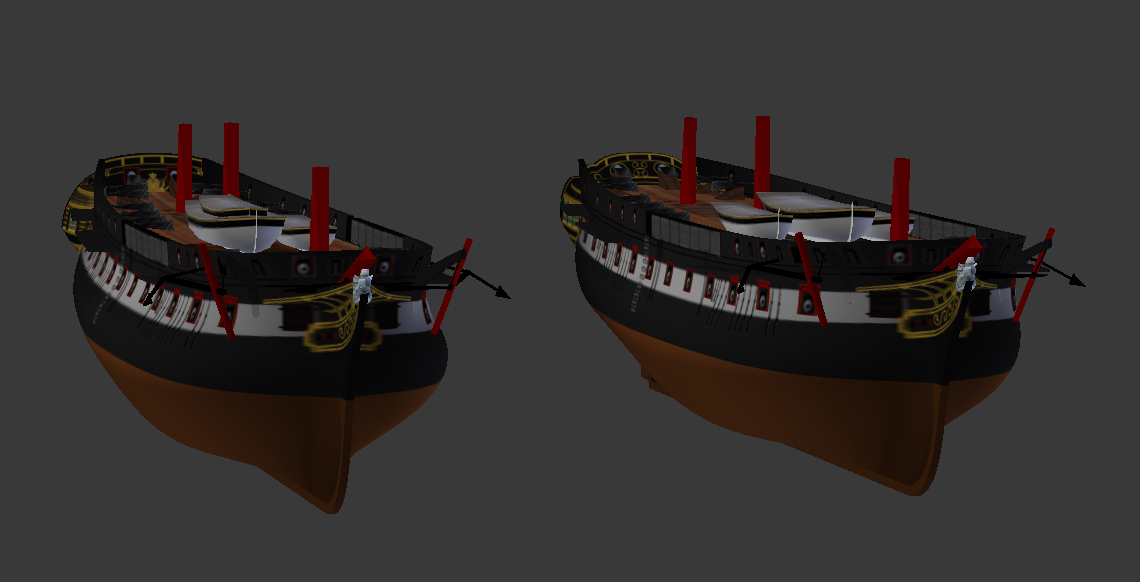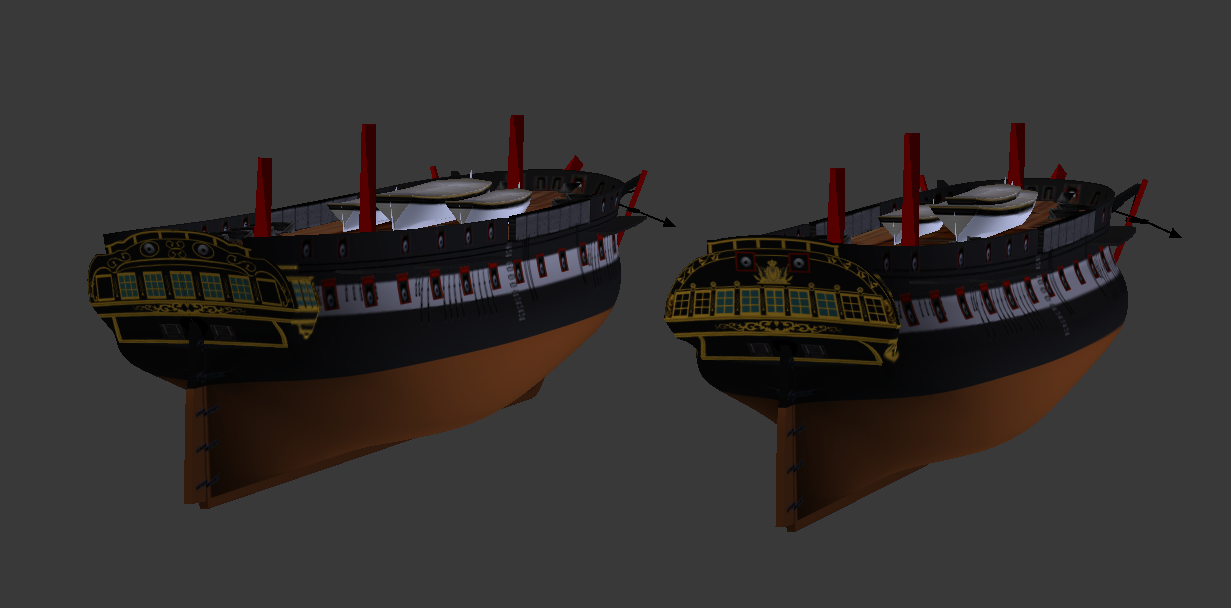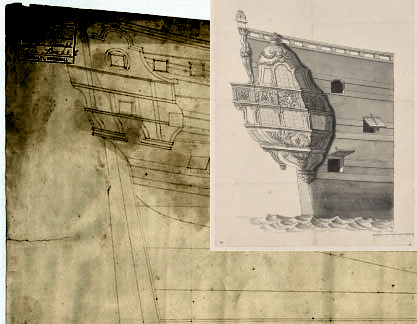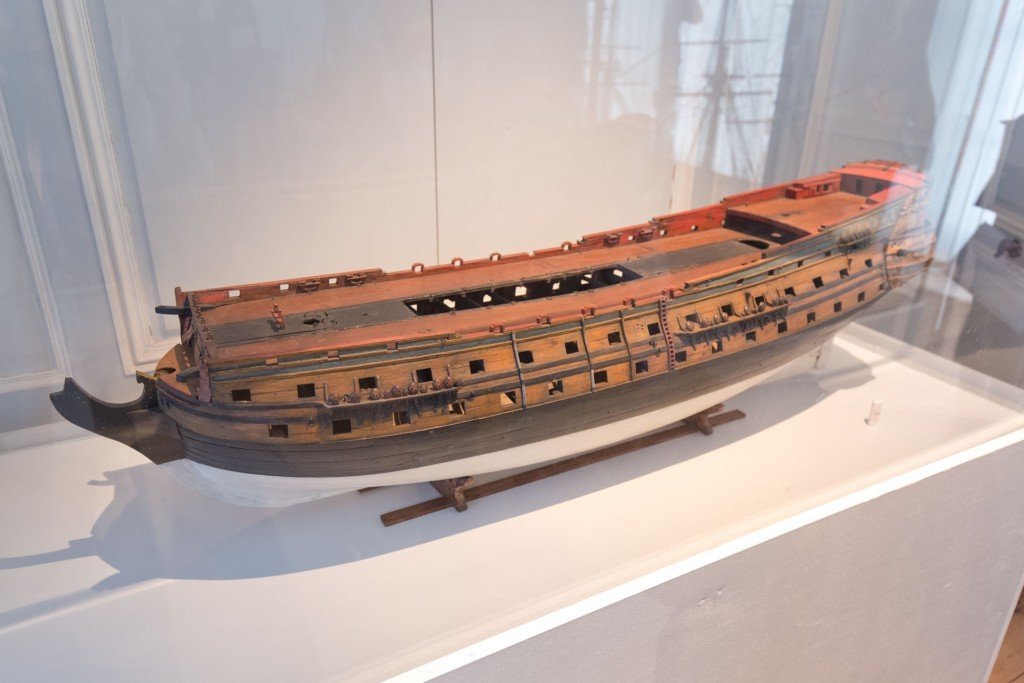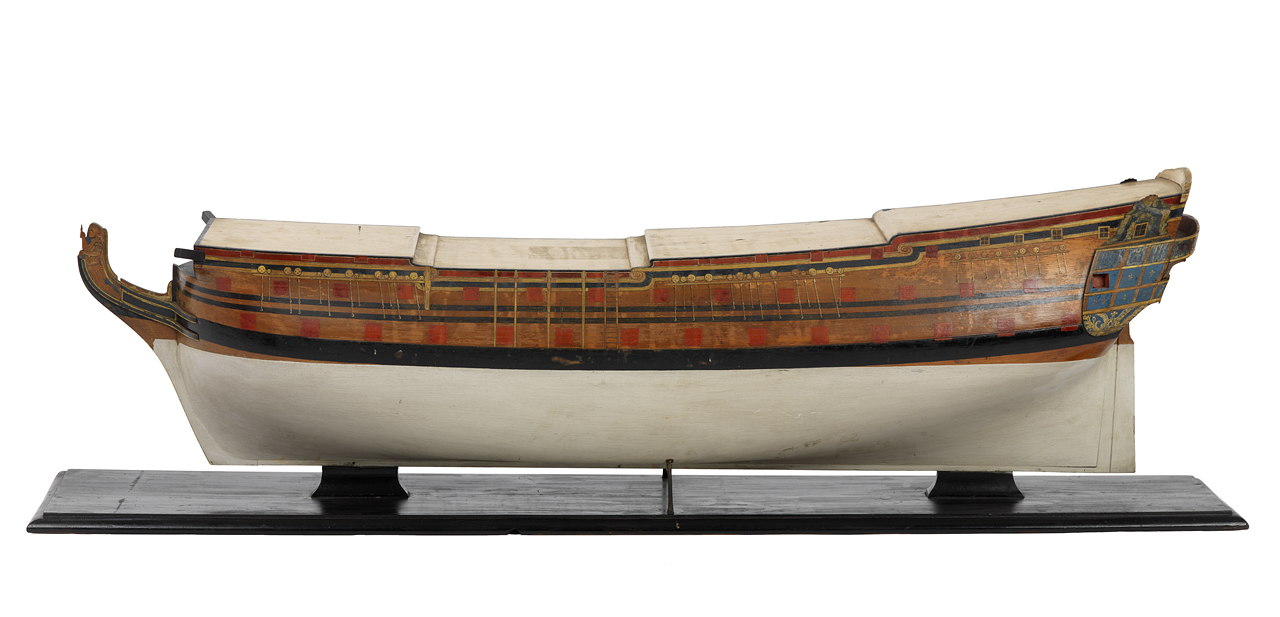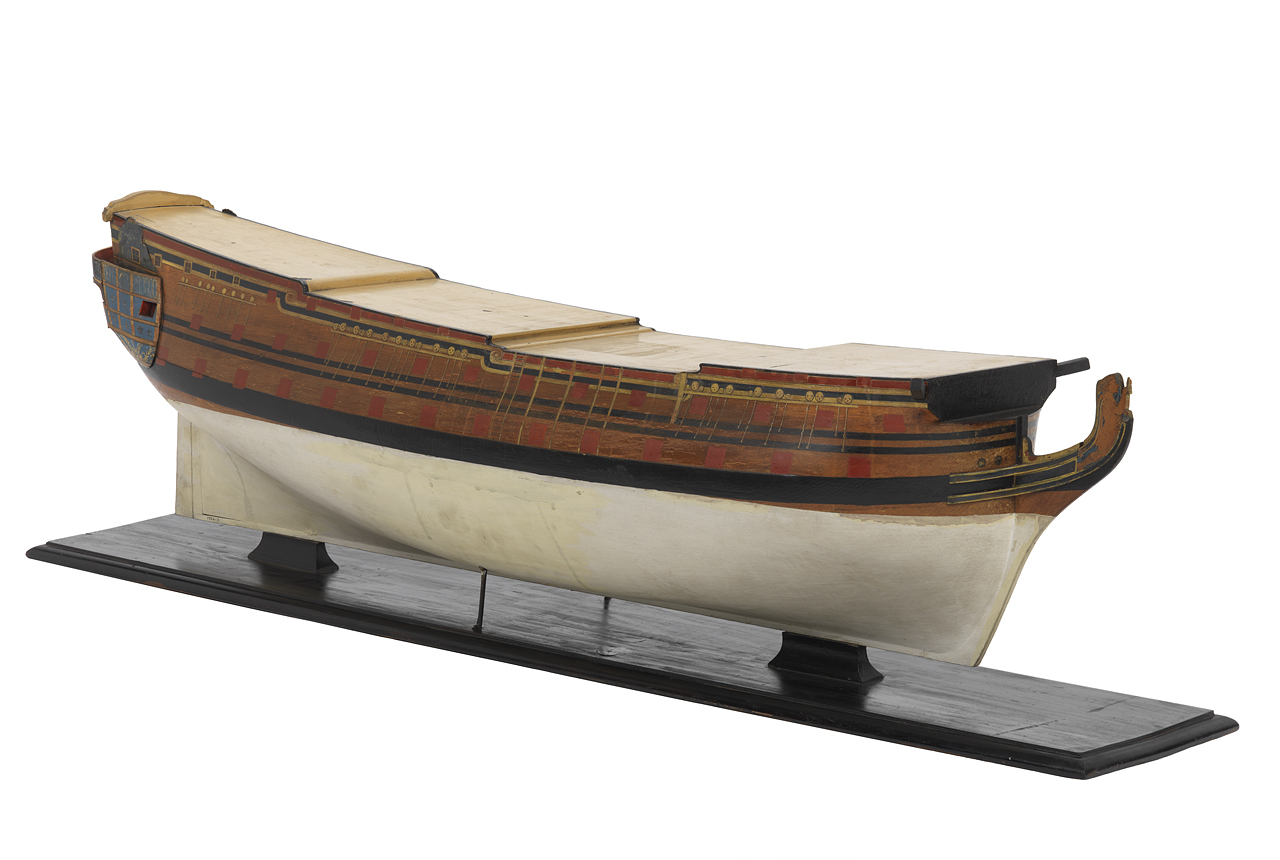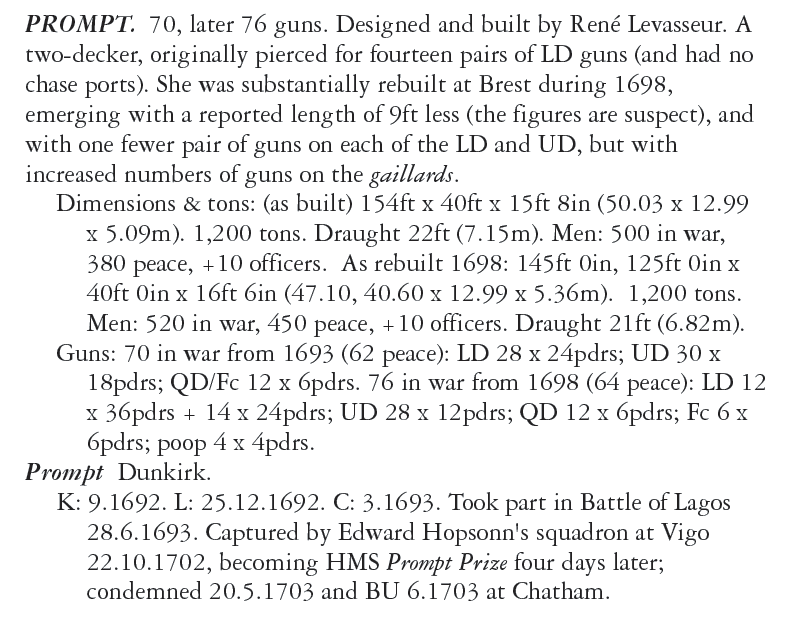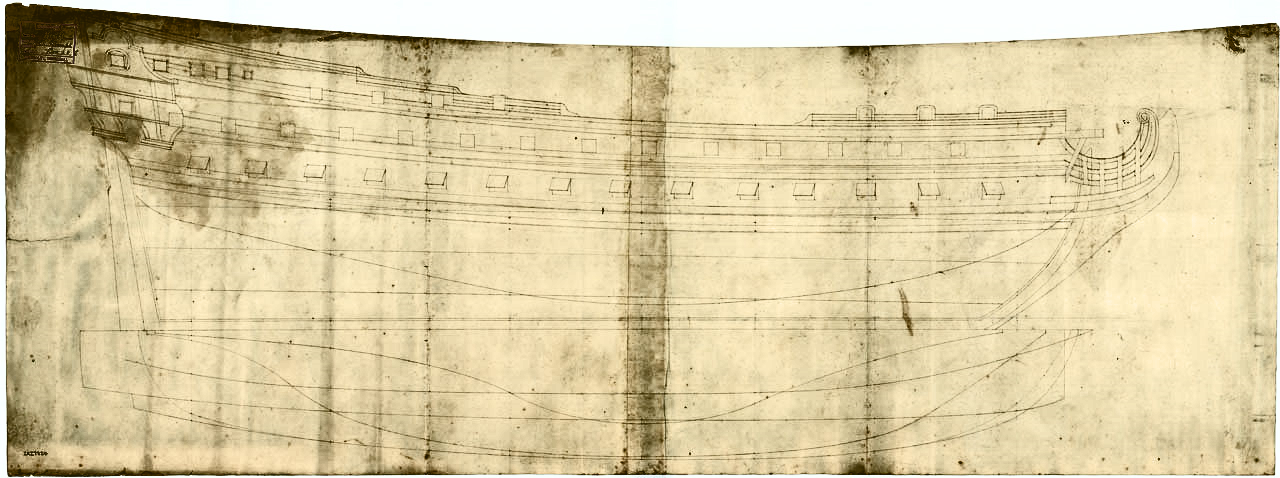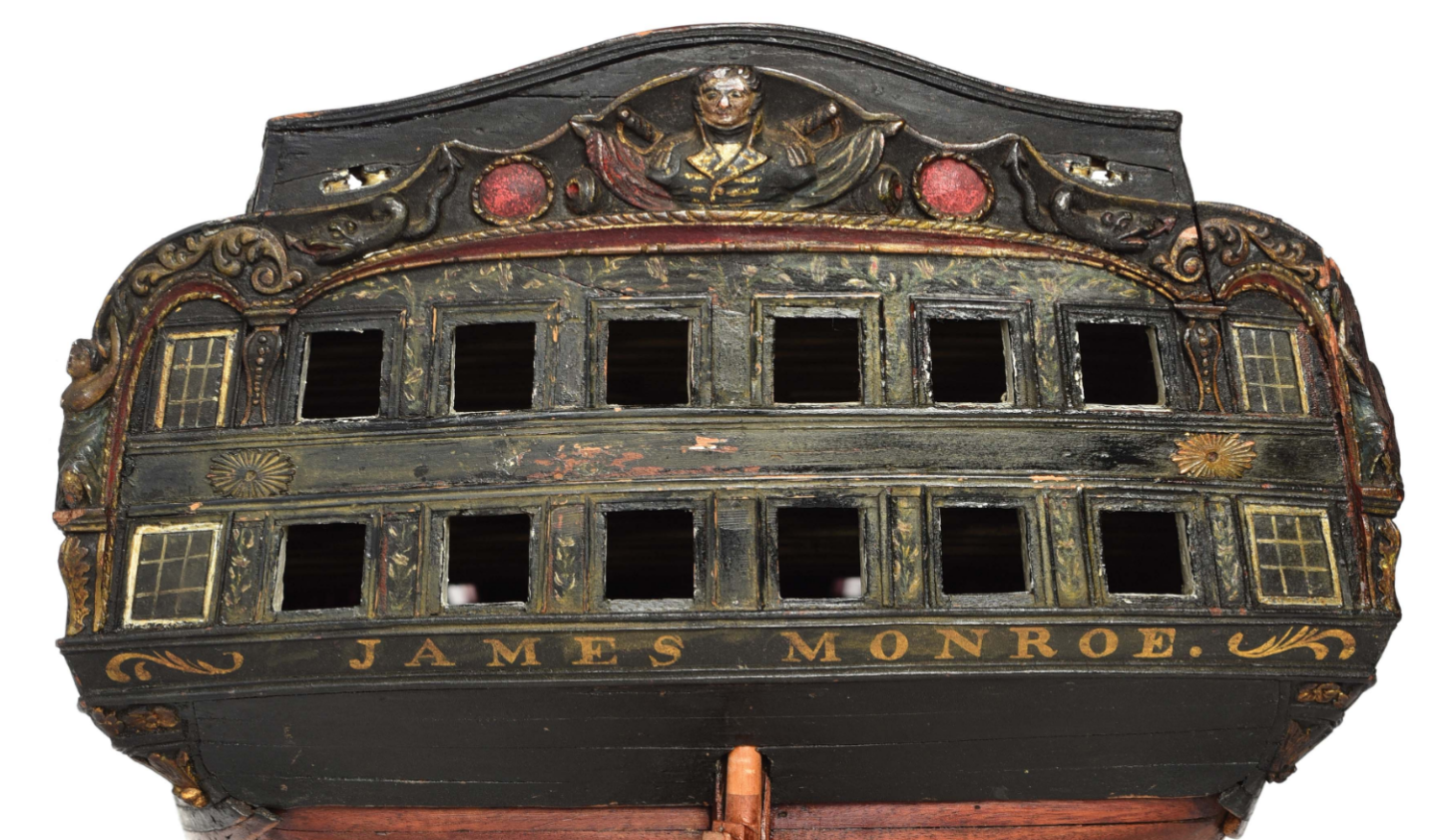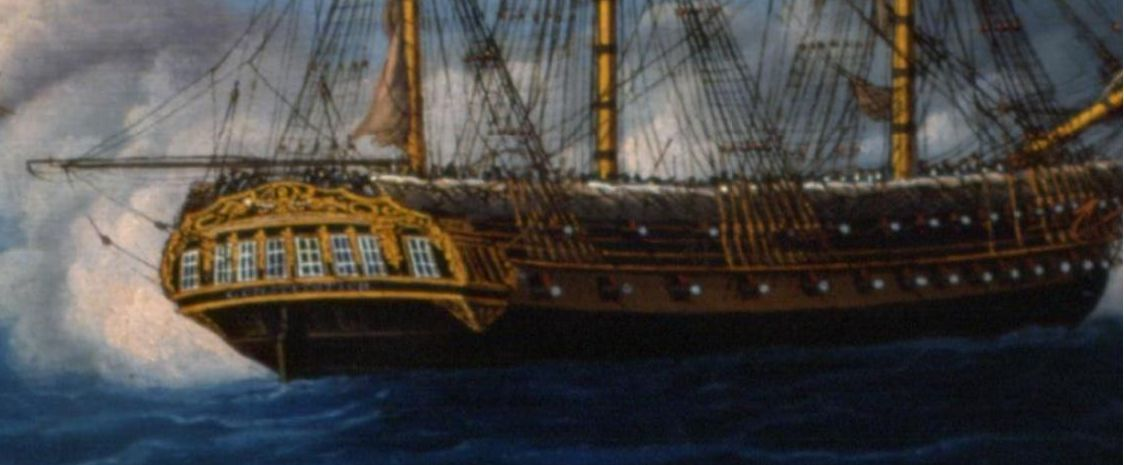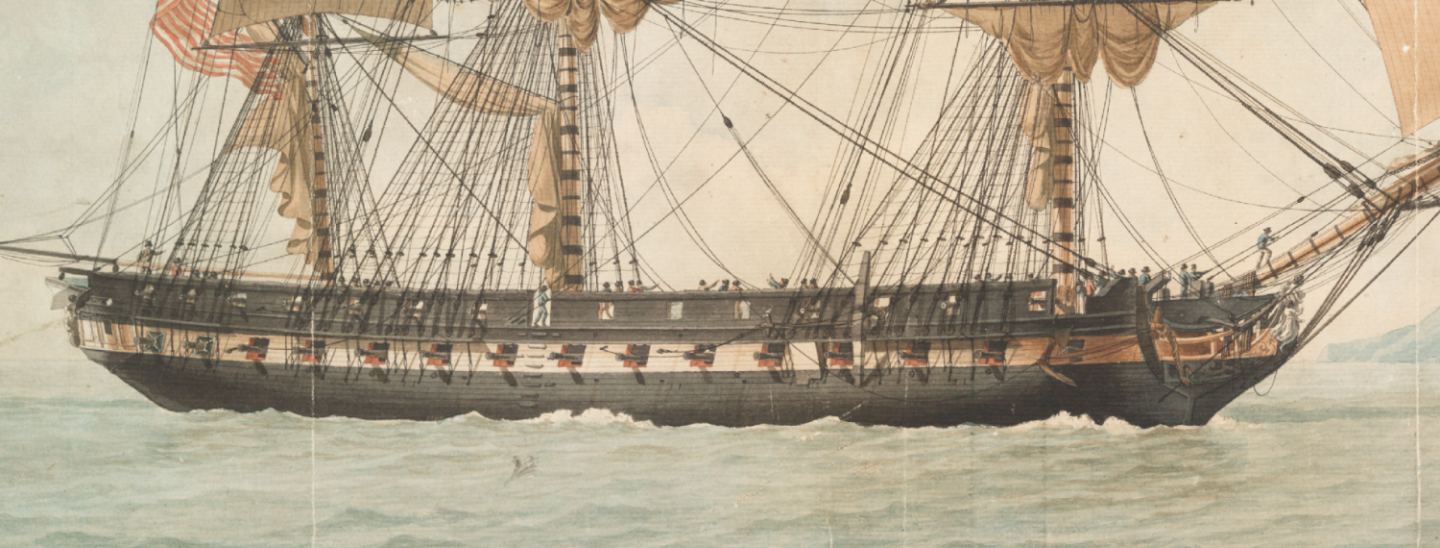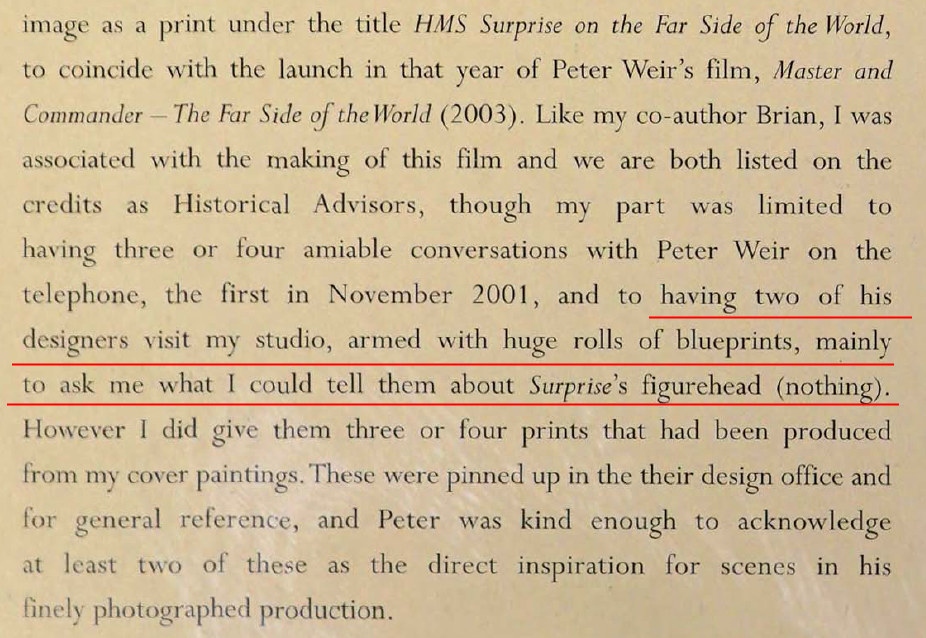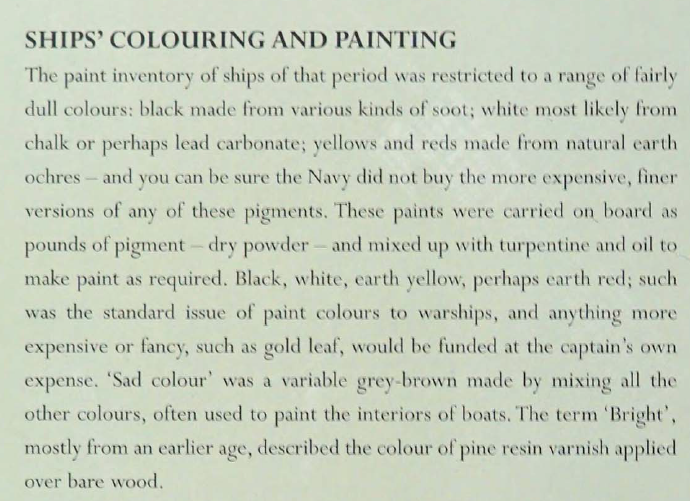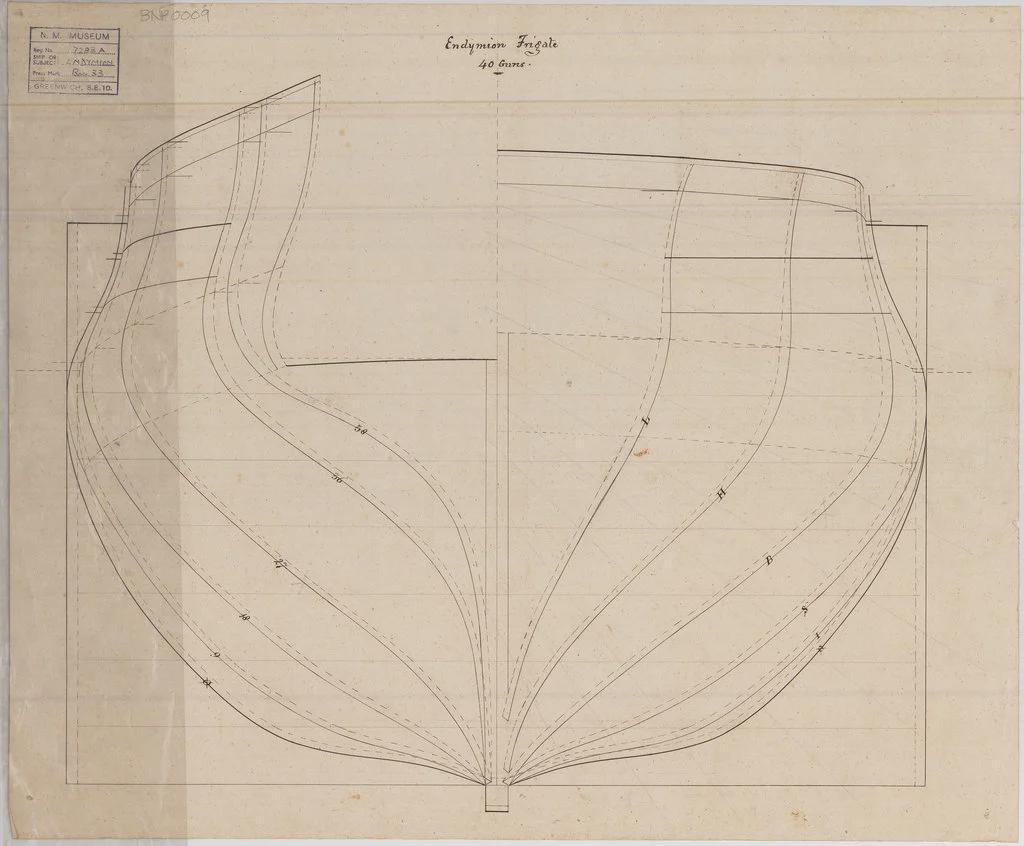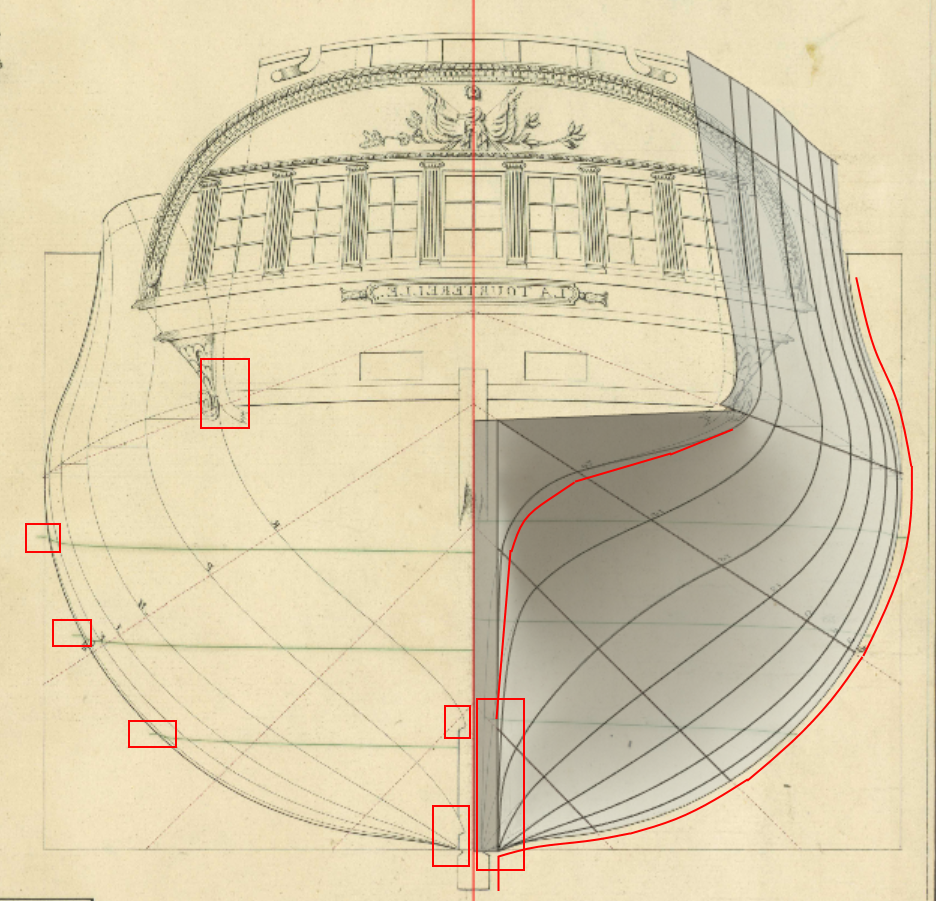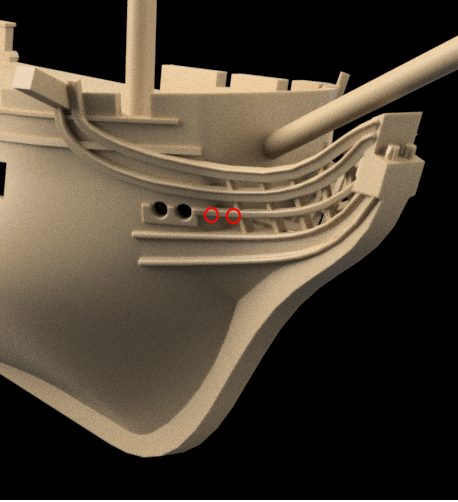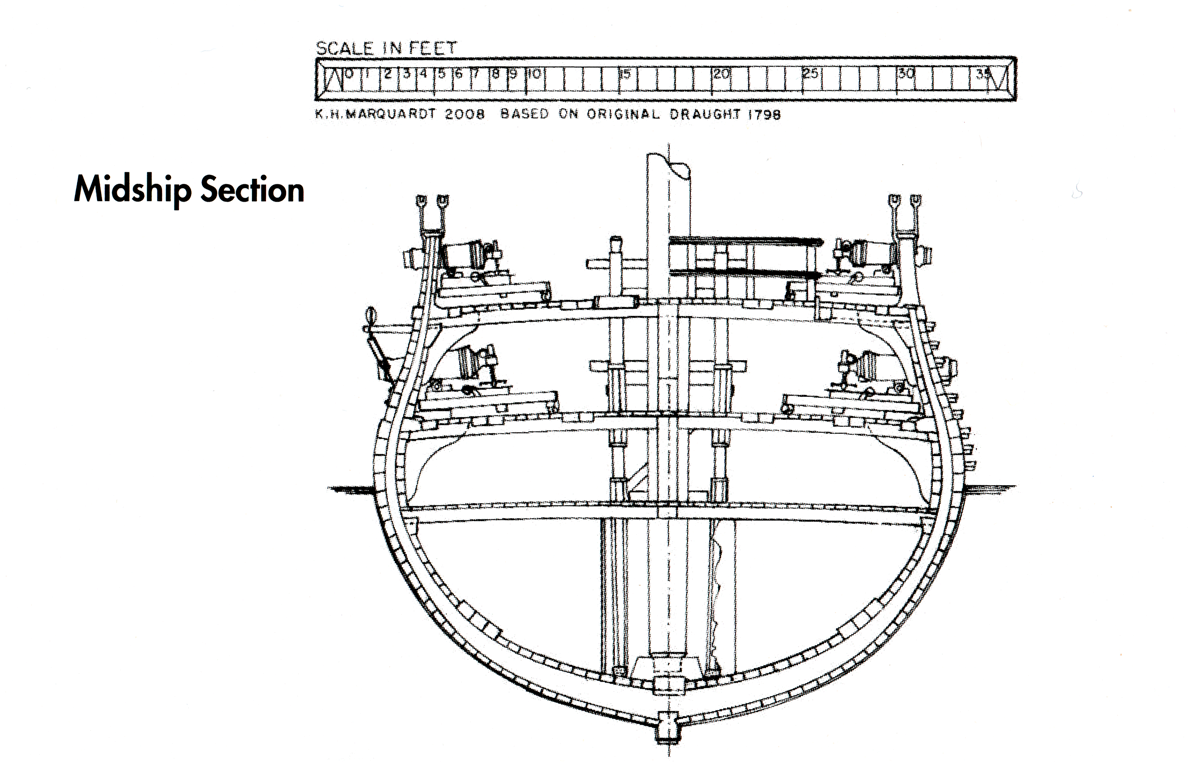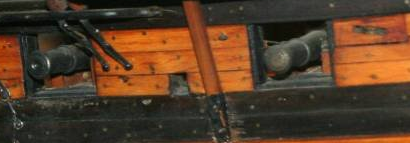-
Posts
973 -
Joined
Content Type
Profiles
Forums
Gallery
Events
Everything posted by Martes
-
My latest ship is, as in the case with variants of cutting the 74, not exact representation of a specific ship, but rather an implementation of a design concept, with the result being something between the Pyramus and the Hyperion. I have taken the hull of the Belle Poule and subjected it to the same 'anglicizing' procedure that turned the Magicienne into Hyperion, reducing the tumblehome and replacing the stern, but, contrary to the Pyramus, I did not change the layout of the forecastle, so both ships share practically the same profile, and only the breadth of the upperworks betraying the difference. Ironically, even the reduction of tumblehome was framed as "combine the topsides of La Nymphe with underwater lines of the La Belle Poule" when these projects were concieved. What I got is a compact 36-gun frigate, slightly wall-sided, relatively shallow and a bit cramped. They were said to be fast but leewardly, and had less stowage capacity for long voyages, but despite a lot of complaints about those ships, their post-war careers - both for Pyramus and Hyperion - were surprisingly active and spanned well into 1830s.
-
USF Confederacy in 3D | Blender
Martes replied to 3DShipWright's topic in CAD and 3D Modelling/Drafting Plans with Software
A stunning beauty!- 107 replies
-
- Frigate
- Confederacy
-
(and 1 more)
Tagged with:
-
If I am not mistaken, the design of the decorations in France was independent of the design of the ship and it is possible that Beren never saw the ship's building plan when he made his sketches and was not aware of the exact angles of the wales. We can never know. On the other hand the builder, probably, had a relatively free hand at implementing the design when mounting the decorations on the hull, and could change sizes and angles of details to fit the ship at hand. We can compare (keeping in mind that the ship was substantially rebuilt before she was captured) the decorations design for Le Ferme and the English lines as taken off. The angles are very different.
-
There are several examples of a similar style of stern on a contemporary models - but all of them belong to a somewhat later period (click for large version of each image). 1. Le Tonnant at Rochefort Museum 2. Le Magnanime at RMG: https://www.rmg.co.uk/collections/objects/rmgc-object-66430 And three depictions of L'Invincible: https://commons.wikimedia.org/wiki/File:Invincible_74_guns_commanded_by_Sir_John_Bentley_Kt_in_the_years_1749-1752_RMG_PU8491.jpg https://commons.wikimedia.org/wiki/File:To_the_Honble_Peter_Warren...This_plate_is_most_humbly_Dedicated...An_Exact_View_of_his_Majesty's_ship_Invincible,_of_74_Guns,_one_of_the_six_French_men_of_war_taken_the_3rd_May_1747_by_the_British_Fleet..._RMG_PZ5887.jpg https://commons.wikimedia.org/wiki/File:The_Invincible_French_Ship_of_War_mounting_74_Guns,_Captured_from_France,_May_3d_1747,_by_Vice_Admiral_Anson_and_Rear_Admiral_Vernon_RMG_PW7937.tiff All of them seem to show a straight cut through the gallery, and what effect firing a gun would have on the surrounding structure can only be guessed.
-
It's slightly more complex than that, since the Prompt was heavily rebuilt in 1698, and the decorations could have been altered or replaced. Whether she was shortened or not can probably be verified by her British plans https://www.rmg.co.uk/collections/objects/rmgc-object-87616 https://www.rmg.co.uk/collections/objects/rmgc-object-87615 But it is relatively difficult in the available resolution and with no apparent scale. Still, the Louvre views show that the quarter galleries were at least designed in a style very similar to the Fulminant.
-
USF Confederacy in 3D | Blender
Martes replied to 3DShipWright's topic in CAD and 3D Modelling/Drafting Plans with Software
As I understand it, Hunt meant he did not have any specific information about the figurehead apart from the original plans. The original figurehead of the Surprise/Unite was, by the way, a decorated shield covered by Phrygian cap, not a human figure, and it is unknown if the figurehead was ever replaced in British service. Your very basic option is white, as most sculptures were made to imitate marble, and this is relatively in line with architectural style of American country mansions. It is possible to use gold/yellow paint for small details, but generally, most of depictions of American ships show white where the British or the French put gold. Most, but not all, and the second option is yellow/gold: The third option is painting them live colors, imitating skin and clothing. It is also not unknown of, at least a model of New Orleans (the lake battleship) features the stern decorated in precisely that style. And for one of the big frigates (either Constitution or the President) as well:- 107 replies
-
- Frigate
- Confederacy
-
(and 1 more)
Tagged with:
-
USF Confederacy in 3D | Blender
Martes replied to 3DShipWright's topic in CAD and 3D Modelling/Drafting Plans with Software
I am not sure those sculptures ever had plating that could be replaced, but there are probably ways to grind a metal or glass (see below) into the paint to achieve similar effect. Most of the paints were made of mix of metallic or mineral powders, after all, and many were poisonous as hell. It's all question of a budget. Nate, I'm not saying it's impossible, just that it's expensive, but if they did invest into decorations, than, actually, why not. But to provide copper plating for sculptures and save on coppering the ship's bottom is a new low. Also, note that the current Rose/Surprise figurehead is not very historical and most of the existing evidence points that figureheads in late 18th century were either whitewashed (to resemble marble/ivory) or painted in live colours. It is possible, however, that greenish mould could produce similar effect on fading and salt-covered white paint. Geoff Hunt mentions in the book on the Surprise: And concerning paints in general:- 107 replies
-
- Frigate
- Confederacy
-
(and 1 more)
Tagged with:
-
USF Confederacy in 3D | Blender
Martes replied to 3DShipWright's topic in CAD and 3D Modelling/Drafting Plans with Software
The sculpture colouring is very good-looking, but I rather doubt it's realism. All the carvings were, obviously, made of wood, and usually would be painted either white (as the most accessible and cheap paint) or, if the captain had means to do so, gilded. At least in Britain this was done out of captain's pocket, not the Admiralty, and I think in the early US there would also be some budgeting problems to produce and provide the ship with very special paint intended only for part of the decorations.- 107 replies
-
- Frigate
- Confederacy
-
(and 1 more)
Tagged with:
-
It is an existing game, called Age of Sail II: Privateer's Bounty. Released in 2000, or thereabouts. I just found the right converters and went as deep into the parameters editing as it was possible. I did some experiments in Unity, mostly to see how cablework can be implemented, but models do eat most of my time. Got too much used to 2.79 Besides, the workflow requires exporting the model to OBJ and then to special converter that creates the game model, so it ultimately does not matter. I tried newer Blenders for terrain generation (blenderGIS, and all that), but I haven't yet figured out a way to make this process (conversion of GIS data to game-specific format) convenient enough, so it's shelved for the moment, and it would be redundant if I ever switch to Unity. Why?
-
Also note the differences between the French configuration on the main plan https://commons.wikimedia.org/wiki/File:Tourterelle_(1795),_ex_French_Tourterelle_(1794)_RMG_J6363.png and the alterations done in British refit on the inboard plan https://commons.wikimedia.org/wiki/File:Tourterelle_(1795),_ex_French_(1794)_RMG_J6362.png and the differences between Tourtourelle and Unite/Surprise. https://www.rmg.co.uk/collections/objects/rmgc-object-82858 Surprise had the forecastle barricade completely enclosed, the head was lighter and the bridle ports moved forward of the catheads. From my experience, the detailing of the positions of the bridle ports, cheek pieces and hawseholes on profile plans are in many cases quite inaccurate (to the extent that different shipyards could interpret the same plans differently), and do not always take the curvature of the hull forward into account, so that if you follow the plan exactly you can end up with very stretched and unnaturally looking result. It takes some trial and error to get it right.
-
Thanks, @Kestros1 Indeed it is much better, but it still ignores the planking, that that should look something like this (this plan is for a different ship, of course): The lines on the original plan are dashed, the planking thickness for each frame is in solid lines. Note, though, that especially on the rounding of the bow, the plank thickness is perpendicular to the surface, and thus in the transverse cut will appear significantly thicker (see this post where I explained it, for example). So your real outline, accounting for the thicker keel, should look something like this (note the waterline marks, the give a rough idea of the planking thickness in corresponding places, as well as the steps at the intersection of the frames and the keel): It is possible, Fusion 360 has some feature to automatically make an envelope of at least fixed thickness around a complex mesh that follows the frames (like Solidify operator in Blender) that make this process somewhat easier, but I haven't found any reliable way to do it except manually.
-
I am very much afraid it is little late, but hawseholes really ought to be closer to the centerline, and their cuts are parallel to the centerline, not perpendicular to the surface of the hull in the place of the cut. And by the way, why the sudden rectangular cut of the bow? It was round on those ships.
-
It's a very common error, everybody falls for it at some point. Planking may appear something thin and negligible, but in fact it adds a very substantial volume to the outside form of the ship. Also note that it's the thickness is not uniform, and the planking is thicker towards the wales. Figures in the great cabin is a very nice touch. Will the top cabin be removable to manipulate them?
-
Does the model include the planking or not? The front view makes the hull appear as if it includes the planking. The stern view shows the hull as if it follows the frame lines. By the way, there is a good quality set of plans of her sistership Tourterelle on wikipedia: https://commons.wikimedia.org/w/index.php?title=Special:MediaSearch&fulltext=Search&search=tourterelle+rmg It shows the French configuration, but it may be of assistance. I suppose the extremely wide keel is for the plastic endurance, but those small frigates never had the poop cabin aft even in French configuration, and the deck should not be flat, but slightly curved towards the centerline.
-
3D Brig 'Rose' in Blender 3.3x
Martes replied to 3DShipWright's topic in CAD and 3D Modelling/Drafting Plans with Software
Yes, just submerge her to X or XI, and it will look all right. By the way, get rid of those marks as well, they were invented late 19-th century and weren't nearly present in the age of sail. -
3D Brig 'Rose' in Blender 3.3x
Martes replied to 3DShipWright's topic in CAD and 3D Modelling/Drafting Plans with Software
It is indeed a nice touch It does, however, add to the list of anachronistic features that could not have been present at the end of 18th century, like the netting around the guns and the dockyard support rings. As I wrote sometimes ago, the waterline should be higher. It does depend on the stage of the cruise, of course, but the ship does ride too high both to be stable and to have sufficient weapons and supplies on board in your representation. It is not unknown that empty water casks would be filled with seawater to preserve the trim of the ship in some cases. It should be somewhere around XI mark forward. The coppering may reach the waterline, or be a little bit lower. And the gunports and oar ports. While they are usually left open, it should technically be possible to safely shut them with board lids, and for that they need to have sills, like a door:
About us
Modelshipworld - Advancing Ship Modeling through Research
SSL Secured
Your security is important for us so this Website is SSL-Secured
NRG Mailing Address
Nautical Research Guild
237 South Lincoln Street
Westmont IL, 60559-1917
Model Ship World ® and the MSW logo are Registered Trademarks, and belong to the Nautical Research Guild (United States Patent and Trademark Office: No. 6,929,264 & No. 6,929,274, registered Dec. 20, 2022)
Helpful Links
About the NRG
If you enjoy building ship models that are historically accurate as well as beautiful, then The Nautical Research Guild (NRG) is just right for you.
The Guild is a non-profit educational organization whose mission is to “Advance Ship Modeling Through Research”. We provide support to our members in their efforts to raise the quality of their model ships.
The Nautical Research Guild has published our world-renowned quarterly magazine, The Nautical Research Journal, since 1955. The pages of the Journal are full of articles by accomplished ship modelers who show you how they create those exquisite details on their models, and by maritime historians who show you the correct details to build. The Journal is available in both print and digital editions. Go to the NRG web site (www.thenrg.org) to download a complimentary digital copy of the Journal. The NRG also publishes plan sets, books and compilations of back issues of the Journal and the former Ships in Scale and Model Ship Builder magazines.


